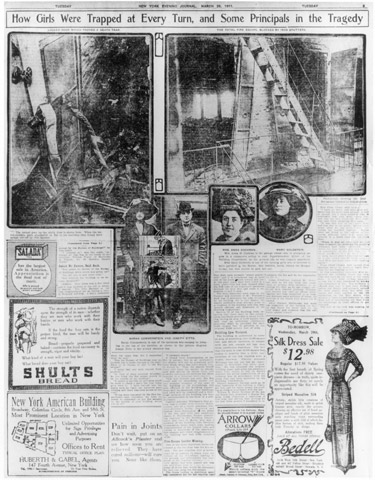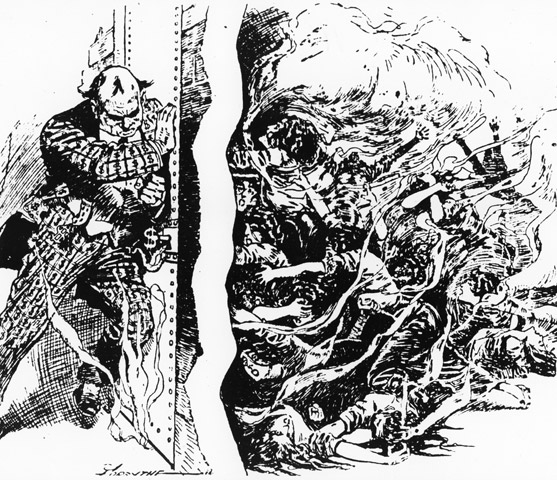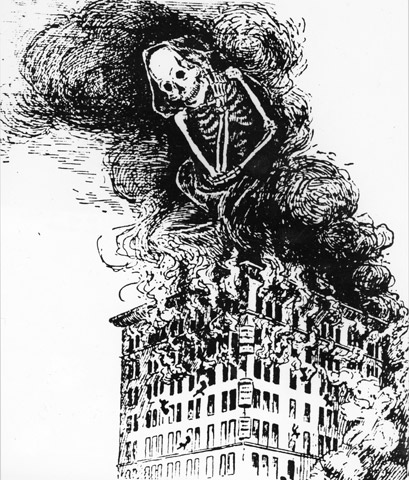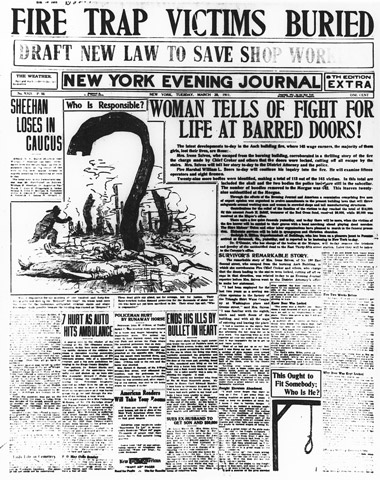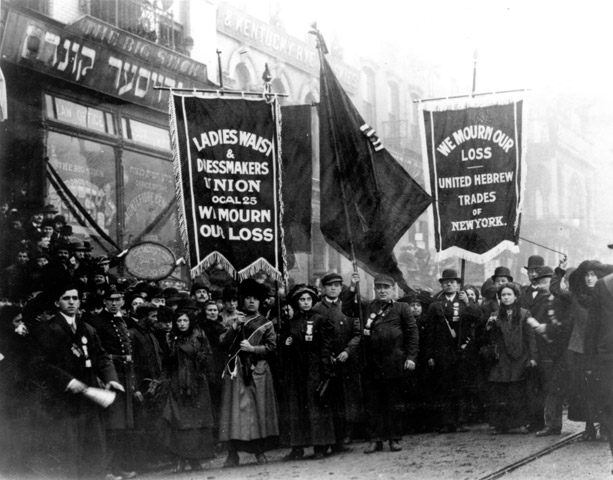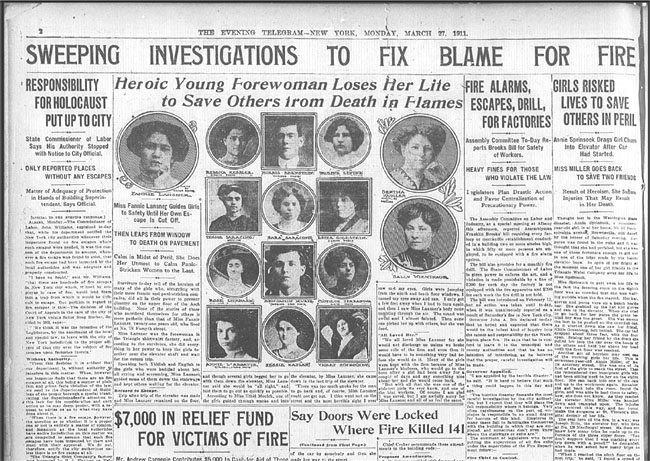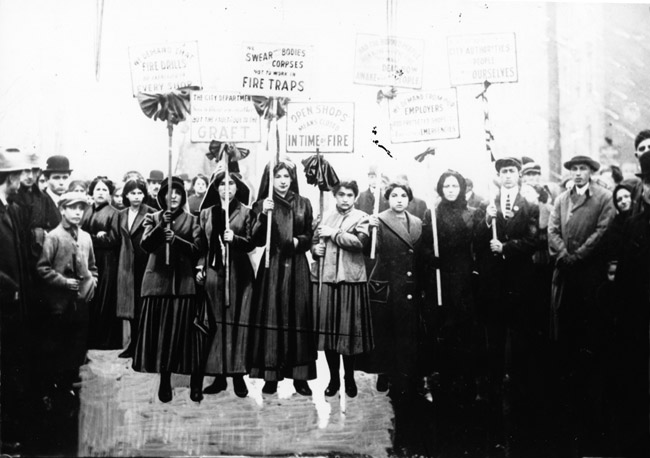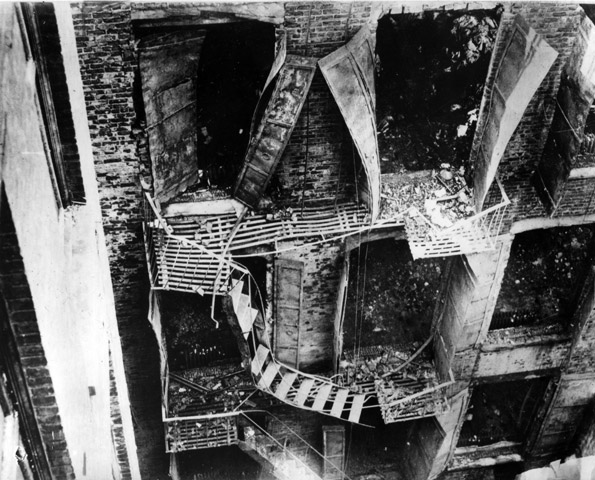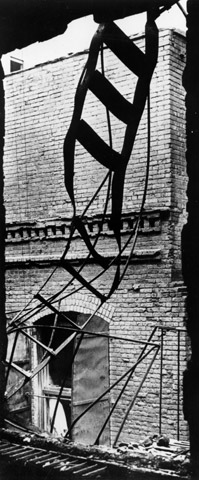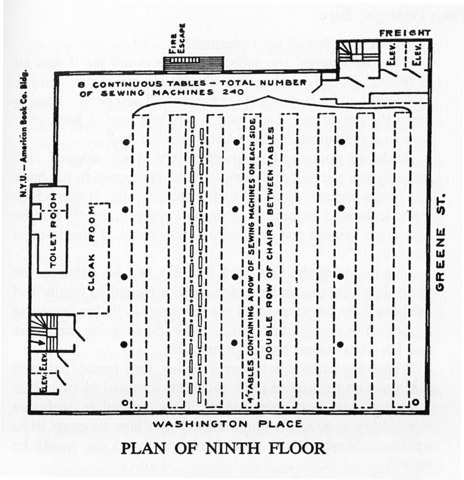In the days following the tragic fire, 350,000 New Yorkers marched in the funeral procession with the victims’ families. The fire sparked anger in the public due to the preventability of the fire and the discovery of suspicious fires in buildings owned by Blanck and Harris to receive insurance checks. The public pinned the blame on them. With their reputations tarnished, the “Shirtwaist Kings” could never return to their former glory.
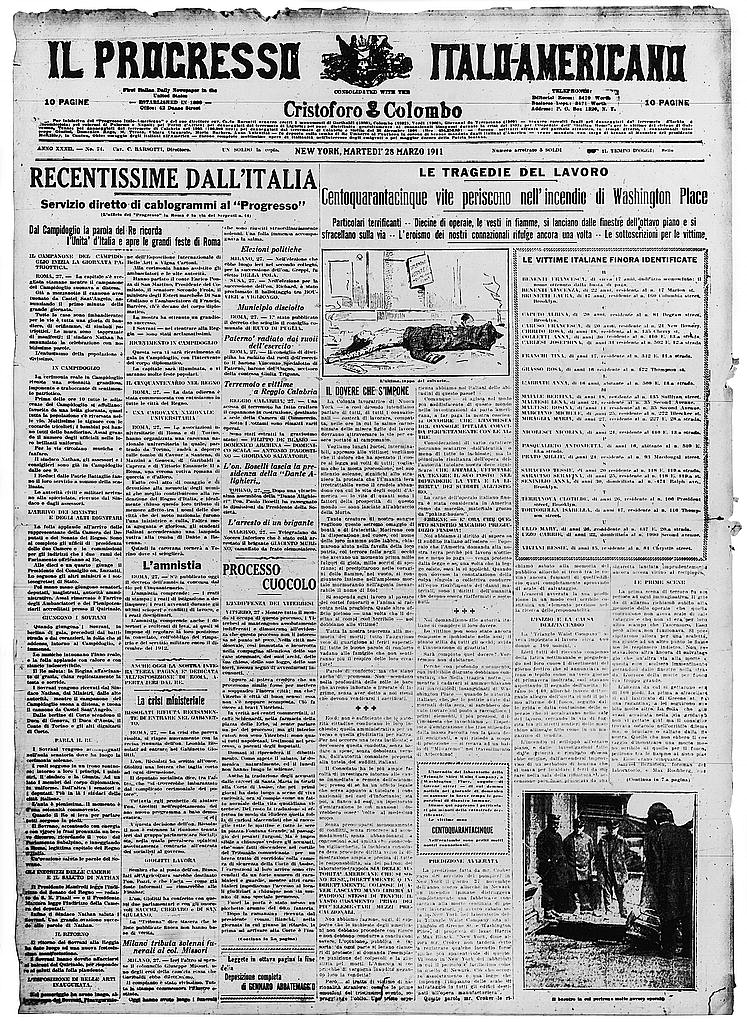
"Le Tragedie Del Lavoro," Il Progresso Ilato-Americano., March 28, 1911. Library of Congress. Photograph.
"My wife and I stood across the street and we looked up at the building and I think I could hear the girls screaming again and see the fire burning" ~ Eraclio Montanaro, witness on the street
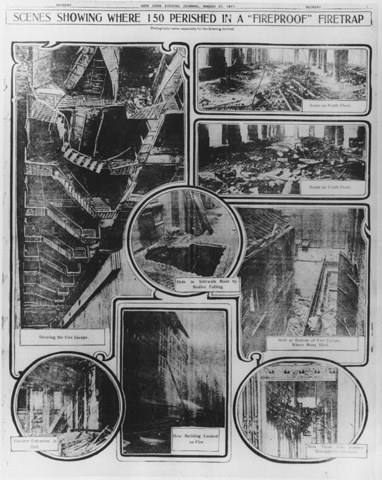
"Scenes Showing Where 150 Perished in a Fireproof Firetrap."" New York Evening Joural, Photograph. March 27, 1911. Comell University, ILR School, Kheel Center for Labor- Management, Documentation & Archives, Triangle Factory Fire Online Exhibit.
"When the bodies didnt crash through the deadlights, they lay there on the sidewalk three or four high, burning, and we had to play the hoses on them."
~ Frank Rubino, Fire Department Captian
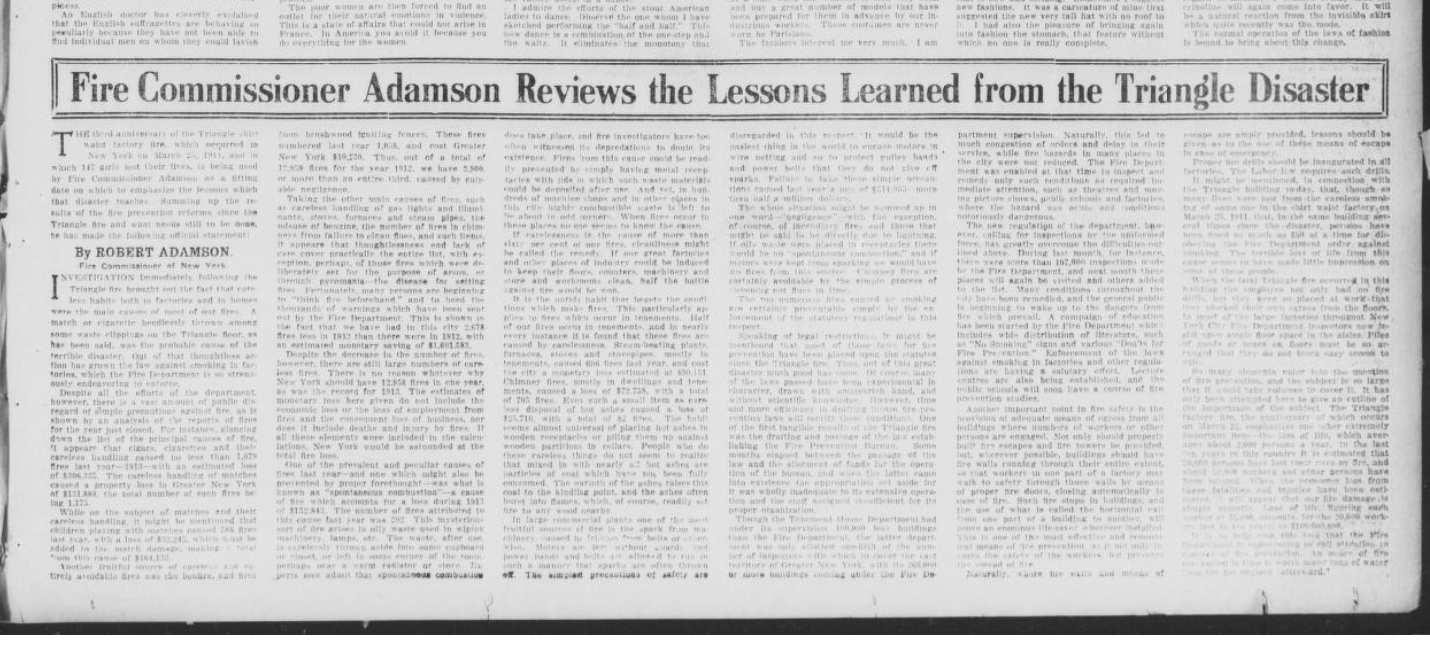
Atlanta Georgian. (Atlanta, GA) 5 Apr. 1914, p. 33. Retrieved from the Library of Congress,www.loc.gov/item/sn89053729/1914-04-05/ed-4/.
"When the fatal Triangle fire occurred in this building the employees not only had no fire drills, but they were so placed at work that they blocked their own access from the floors. In most of the large factories throughout New York City Fire Department inspectors now insist upon ample floor space in aisles."
~ Robert Adamson, Fire Commissioner
"For while we couldn't move. We watched in horror how bunches of women came hurtling down from the top of the bulding . . . All around us we saw people covered with blood. I got sick and could not look anymore . . . The whole night I could not sleep and in the morning I was restless." ~ Eraclio Montanaro, witness on the street

"In an editorial cartoon, a skeleton surrounded by smoke and flames rises from the burning Asch Building and considers the horrifying events below," 1911. Cornell University, ILR School, Kheel Center for Labor-Management, Documentation & Archives, Triangle Factory Fire Online Exhibit.

Unknown Artist. "Triangle Shirt Waist Manufacturers Listening To Testimony Against Them: Max Blanck and Isaac Harris,” 1911. Cornell University, ILR School, Kheel Center for Labor-Management, Documentation & Archives, Triangle Factory Fire Online Exhibit.
"At that time - at that time the floors - the floors were wooden floors and they were soaked through with oil, the baskets that people worked was wicker baskets and each basket - each basket contained about four to five dozen blouses, lingerie at that time. And lace"
~ Max Hoff, survivor
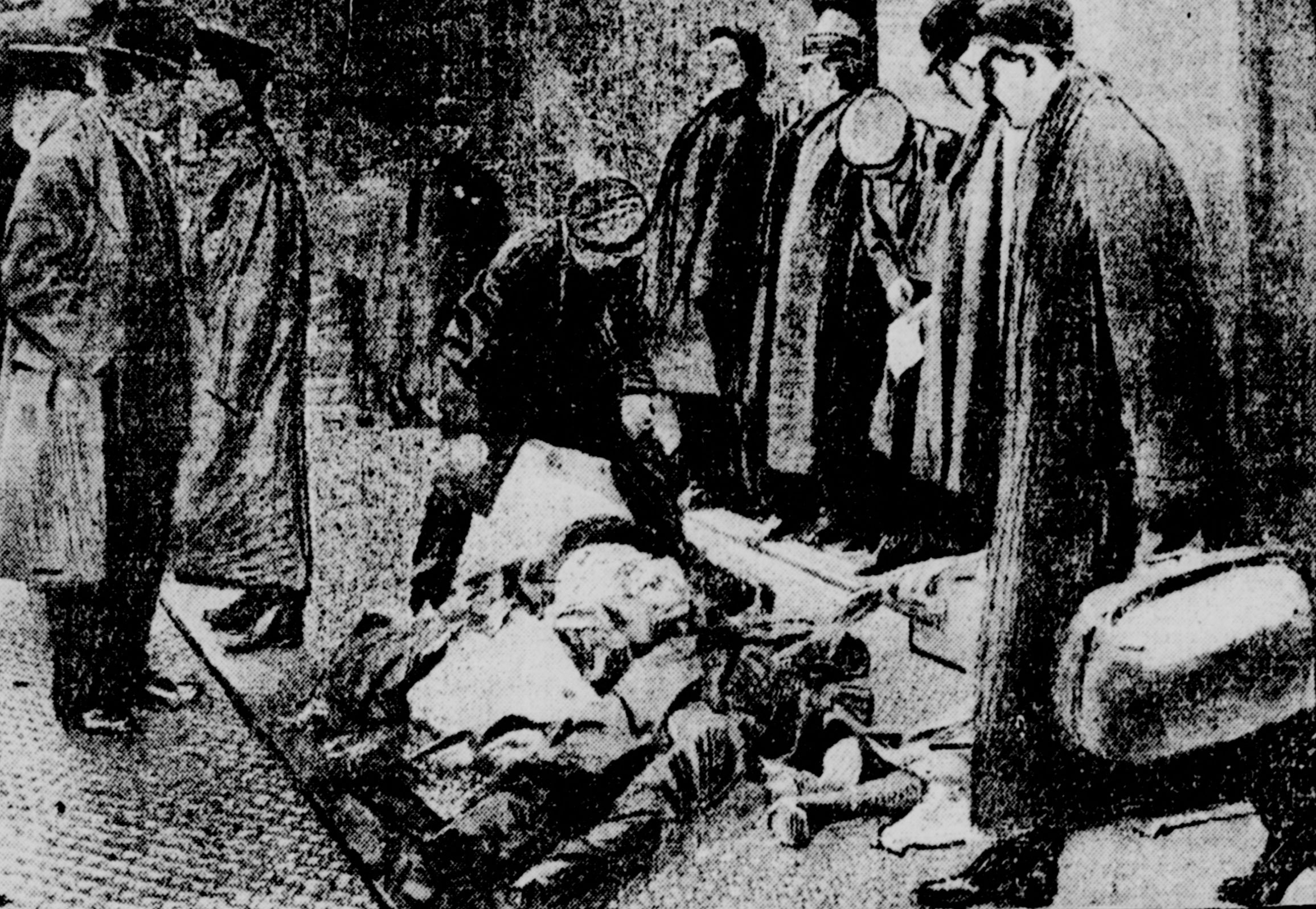
"Investigators on roof of Asch Building - From leftto right Coroner Holzhauser, J. R ubins, and C. F. Bostwick" Photograph 1911. Cornell University, ILR School, Kheel Center for Labor-Management, Documentation & Archives, Triangle Factory Fire Online Exhibit.
“The highly inflammable materials inside caused the blaze to spread within a few minutes to the eighth and tenth floors. The employers tried to batter down the doors, said to have been locked, but were either crushed to death in the mad panic or killed by inhaling the flames and smoke. Some of them tried to get away by means of the fire escape, which broke like so much paper under their weight. When police completed their official report several days later, it was shown that 146 lives had been sniffed out by the fire.”
~ The San Antionio Light
"How Girls Were Trapped at Every Tumn and Some Princinals in the Tragedy." New York Evening Journal, Photograph. March 28, 1911. Comell University, ILR School, Khee1 Center for Labor-Management, Documentation & Archives, Triangle Factory Fire Online Exhibit.
"The disaster may not come today, nor yet tomorrow; it may not come for a year, but unless conditions are changed, and radically changed, it will surely come"~ The Day Book






